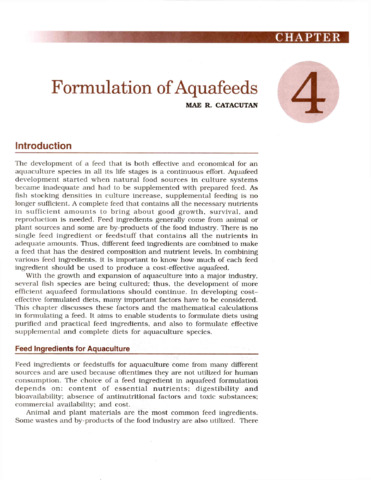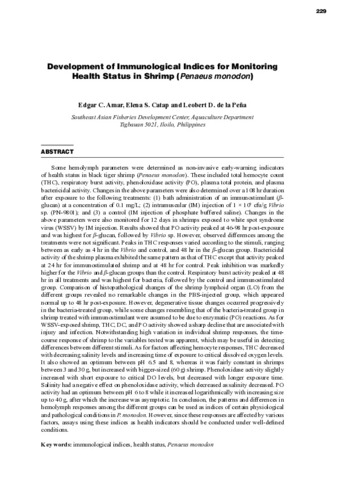Genotype environment interaction in the response of three strains of Nile tilapia to poor nutrition
- Global styles
- MLA
- Vancouver
- Elsevier - Harvard
- APA
- Help
Share
Abstract
Experiments were conducted to determine the effects of poor nutrition on the growth of three Oreochromis niloticus strains fed protein-deficient diets. Four-week-old fry from the three "test" strains were paired with a fourth "reference" strain of tilapia (red) of the same size and stocked in 60-1 aquaria. The treatment lasted 6 weeks, with fish being fed commercial fish feed crumbles for the first and last 2-week periods and rice bran during weeks 3 and 4. Control fish were fed commercial diet throughout. Both control and treatment fish were fed at 20% of fish biomass per day. Lengths and weights were measured every 2 weeks.
Significant strain effects were noted when the growth of test fish over the whole experimental period was analysed by analysis of covariance using the reference fish growth as a concomitant variable. The relative growth of the three test strains differed at each feeding phase. The NIFI strain grew best during the commercial feed phases, the Israel strain performed best during the rice bran phase while the CLSU strain, regardless of the type of nutritional environment, usually ranked last. Different performance rankings at each feeding phase represent strong genotype X environment interaction among these commercially important lines. This was statistically confirmed by analysis of covariance of the growth of the Israel and NIFI strains during the different feeding phases using the reference strain as a covariate.
Suggested Citation
Romana-Eguia, M. R. R., & Doyle, R. W. (1992). Genotype environment interaction in the response of three strains of Nile tilapia to poor nutrition. Aquaculture , 108(1-2), 1-12. https://doi.org/10.1016/0044-8486(92)90314-B
Type
ArticleISSN
0044-8486Collections
- Journal Articles [1258]
Related items
Showing items related by title, author, creator and subject.
-
Formulation of aquafeeds
Catacutan, Mae R. (Aquaculture Department, Southeast Asian Fisheries Development Center, 2002)The development of a feed that is both effective and economical for an aquaculture species in all its life stages is a continuous effort. Aquafeed development started when natural food sources in culture systems became ... -
A preliminary study on the purified test diet for young milkfish, Chanos chanos
Lee, Dong-Liang; Liao, I-Chiu (Aquaculture Department, Southeast Asian Fisheries Development Center, 1976)In studying the nutritional requirements of young milkfish experiments were conducted to develop a purified test diet. Mixtures of the purified constituents tested were: vitamin-free casein, vitamin-free gelatin, supplemented ... -
Development of immunological indices for monitoring health status in shrimp (Penaeus monodon)
Amar, Edgar C. ; Catap, Elena S.; de la Peña, Leobert D. (Aquaculture Department, Southeast Asian Fisheries Development Center, 2005-03)
Some hemolymph parameters were determined as non-invasive early-warning indicators of health status in black tiger shrimp (Penaeus monodon). These included total hemocyte count (THC), respiratory burst activity, phenoloxidase ...
; Catap, Elena S.; de la Peña, Leobert D. (Aquaculture Department, Southeast Asian Fisheries Development Center, 2005-03)
Some hemolymph parameters were determined as non-invasive early-warning indicators of health status in black tiger shrimp (Penaeus monodon). These included total hemocyte count (THC), respiratory burst activity, phenoloxidase ...





